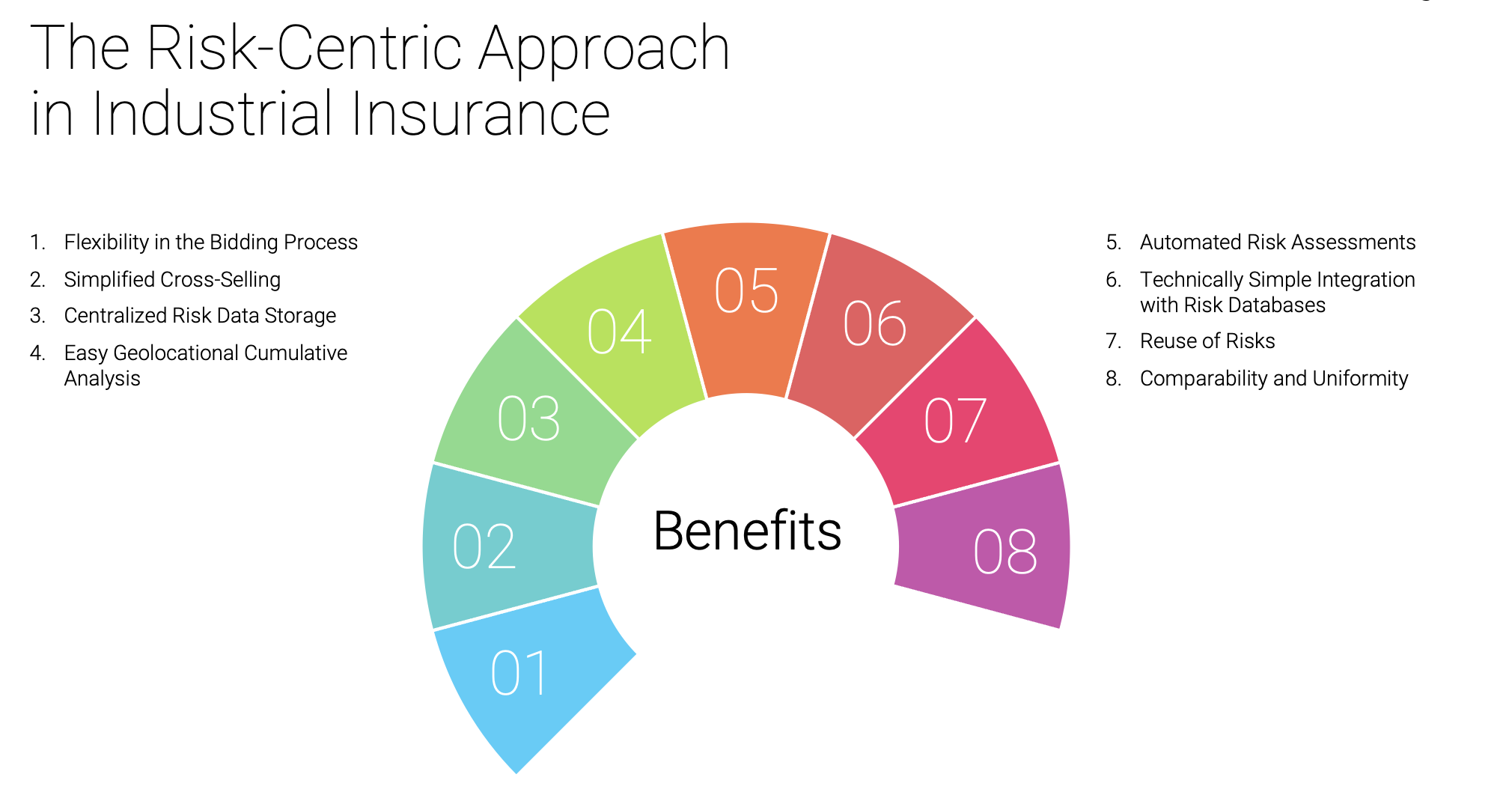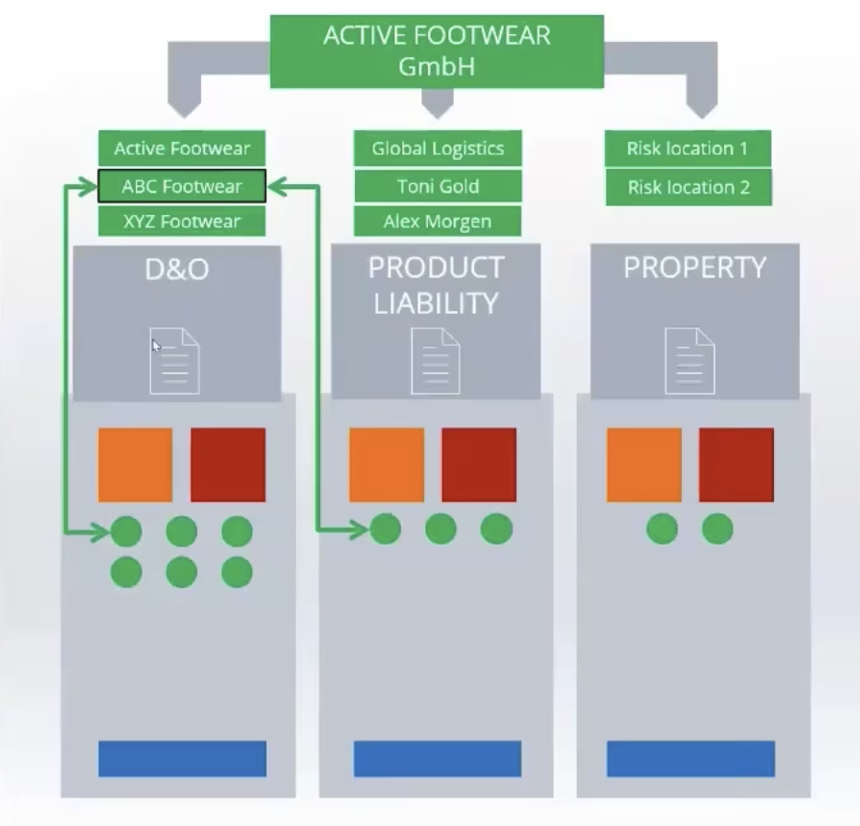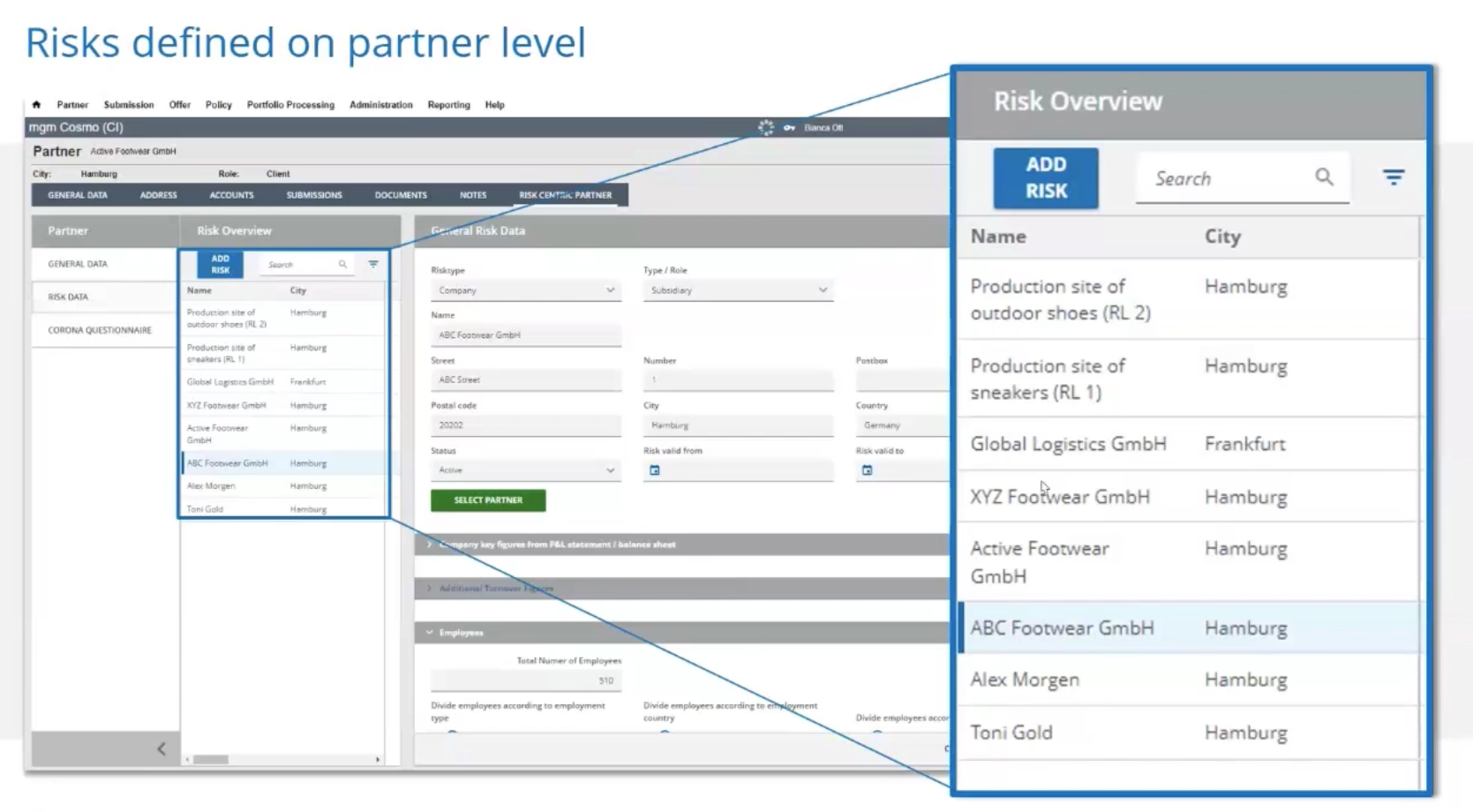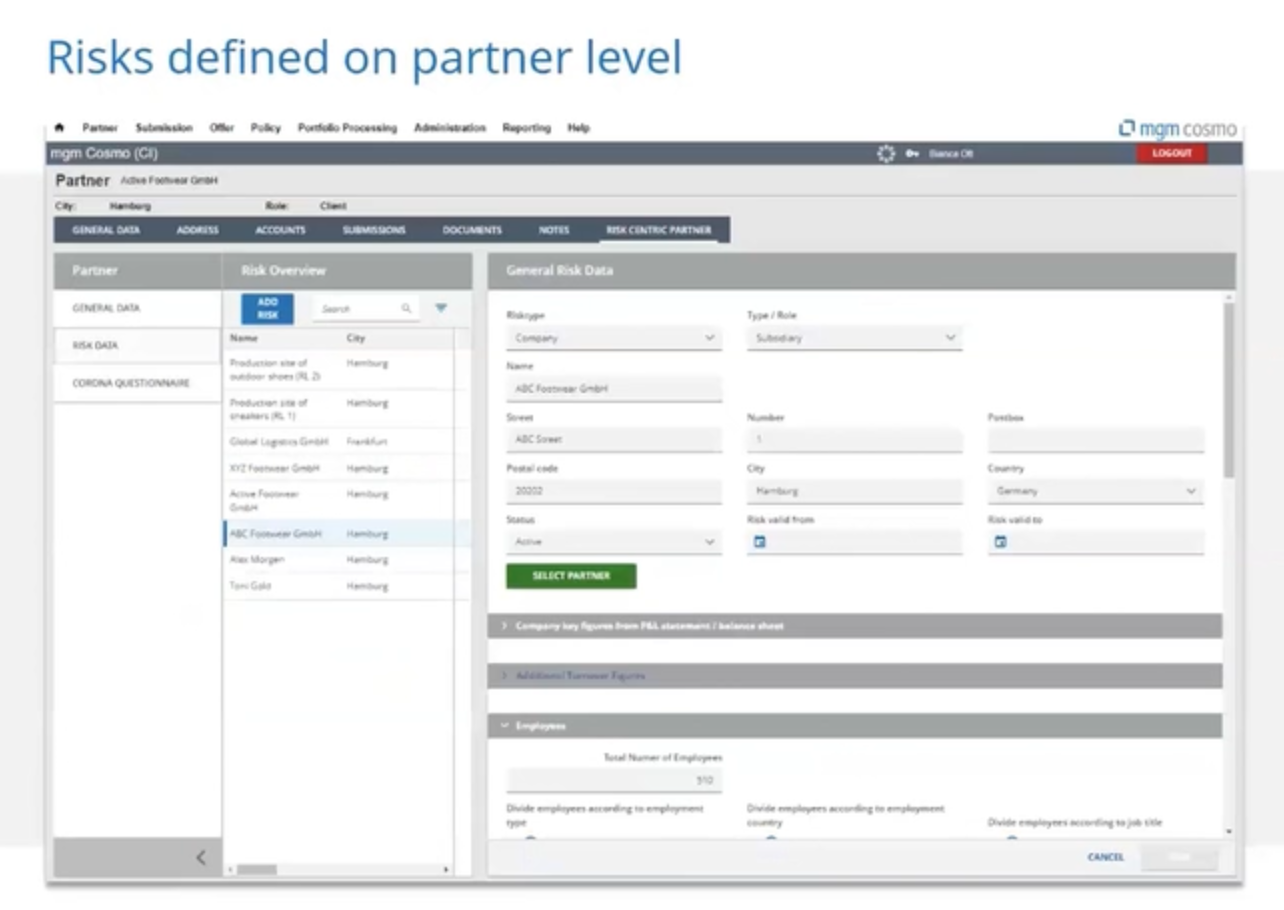The risk-based approach to storing customer data provides brokers and industrial insurers with an intriguing alternative to the contract-based approach. In this method, risk data is stored at the customer level, independent of individual contracts. This results in a much-improved overall view of all customer risks and accelerates the processing of cross-sector endorsements.
Brief & Concise
- The risk-based approach in the data storage of industrial insurance enables efficient management of risk data at the customer level, leading to faster cross-sector processes.
- In contrast to the traditional contract-based storage, this approach creates a central information pool that promotes the reuse of risk data and offers clear advantages in inventory processes such as Renewal.
- The application of the risk-based approach in mgm A12 Cosmo demonstrates that efficient bidding processes and optimized daily tasks like search and reporting are achievable. This approach not only promises efficiency but also opens up new digital possibilities in the insurance industry.
In contrast to the traditional contract-based data storage, the risk-based approach does not capture risks at the contract level. Instead, they are stored at the customer level and described independently of contracts based on their risk parameters—whether they are personal, corporate, or property risks. This approach creates a central repository for risks, where all information about them is digitally stored. This includes risks that are not yet insured (coverage gaps) or are covered by other insurers or brokers.
This creates a central information pool for all customer risks. The subsequent contracts then automatically draw their information from this central information pool. For example, centrally recorded risk data such as company size, number of employees, revenue, and financial data are used in both Financial Lines and Property Insurance. This method enables cross-sector reuse of risk data and ensures a consistent description, regardless of their coverage.
This results in clear quality and efficiency advantages, particularly in inventory processes, such as annual reporting or handling endorsements during Renewal.
For brokers, the bidding process is also simplified, as cross-sector bids can be conducted with significantly less effort.
Daily tasks such as searching or reporting across the entire portfolio are streamlined when risk data exists as independent data elements. Similarly, conducting geolocational cumulative assessments for specific risk types, such as buildings in a particular region, becomes more straightforward. The technical implementation of automated risk assessment rules and integration with external risk databases is also simplified, as data mapping is done per risk type rather than per coverage. This means that fewer data reconciliations are necessary.
mgm A12 Cosmo: The Risk-Centric Approach in Practice
In mgm A12 Cosmo, the concept of the risk-centric approach is implemented in practice. To illustrate its application, we present a specific insurance scenario featuring the company “Active Footwear,” which manufactures outdoor and sports shoes. With two subsidiaries for sales and marketing, along with a holding that includes a logistics company, various insurance aspects arise. In addition to the policyholder “Active Footwear” and its subsidiaries, there are also individual risks, such as those related to D&O coverage, to be considered.
Example Company Active Footwear: Overview of Key Risks
A glance at the interface in mgm A12 Cosmo reveals the customer “Active Footwear” with a list of all risks associated with it. In this case, the primary data identified for the described scenario includes company and personnel information.
- Global Logistics GmbH (Holding)
- XYZ Footwear GmbH (Subsidiary)
- Active Footwear GmbH (Subsidiary 1)
- ABC Footwear (Subsidiary 2)
- Outdoor Shoe Production Facility (Building, Machinery)
- Sports Shoe Production Facility (Building, Machinery)
- Alex Morgan (Key Person 1)
- Toni Gold (Key Person 2)
On the left side, one of the subsidiaries has been selected (“ABC Footwear GmbH”), and a form for capturing “Company” type risks with the role or manifestation as a subsidiary has been opened. With the provided information, a comprehensive and complex risk profile can be recorded.
The data captured in this way can now be utilized for various processes, such as conducting bids for Property and D&O coverages. In this case, only sector-specific information needs to be collected, as all risk data is automatically retrieved from the central risk database.
Conclusion
The risk-based approach in data storage leads to significantly more efficient inventory processes, such as bids, endorsements, and annual renewals. Software solutions like mgm A12 Cosmo support this cross-sector approach, which can be tailored individually to specific distribution and inventory processes. This approach not only promises a more effective workflow but also opens up new possibilities for digital processes and data exchange in the insurance industry.
Learn more about mgm A12 Cosmo and get in touch with our Cosmo team. Click here for further information.












